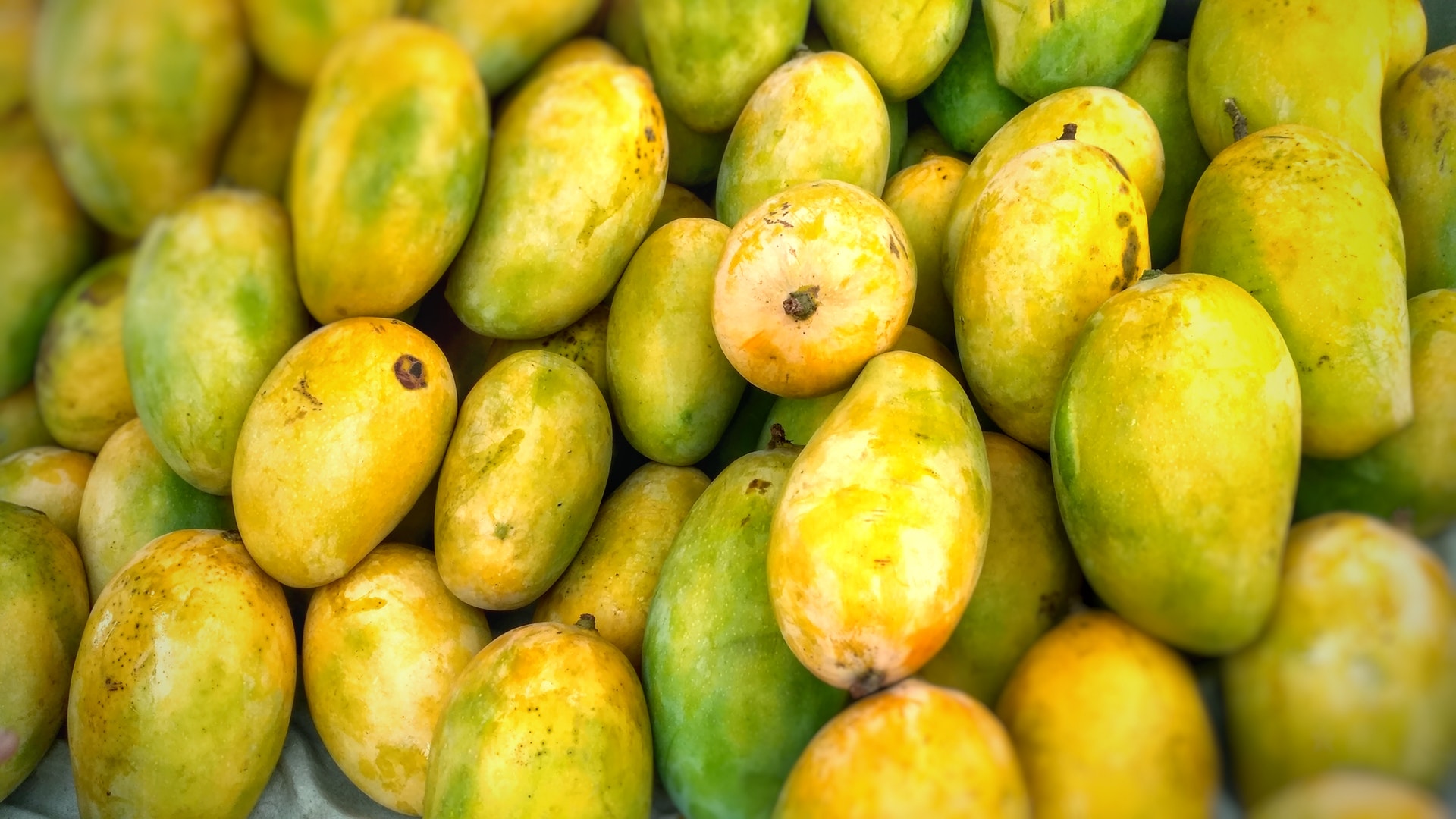Fruits
Mango is one of the most popular of all tropical fruits.

Mangoes belong to genus Mangifera which consists of about 30 species of tropical fruiting trees in the flowering plant family Anacardiaceae
Botanical description
MI is a large evergreen tree in the anacardiaceae family that grows to a height of 10-45 m, dome shaped with dense foliage, typically heavy branched from a stout trunk. The leaves are spirally arranged on branches, linear-oblong, lanceolate – elliptical, pointed at both ends, the leaf blades mostly about 25-cm long and 8-cm wide, sometimes much larger, reddish and thinly flaccid when first formed and release an aromatic odour when crushed. The inflorescence occurs in panicles consisting of about 3000 tiny whitish-red or yellowish – green flowers. The fruit is a well known large drupe, but shows a great variation in shape and size. It contains a thick yellow pulp, single seed and thick yellowish – red skin when ripe. The seed is solitary, ovoid or oblong, encased in a hard, compressed fibrous endocarp.
Habitat
It is native tropical Asia and has been cultivated in the Indian subcontinent for over 4000 years and is now found naturalized in most tropical countries.
Parts used: Roots, bark, leaves, fruits, seeds, flowers and kernels are used.
Synonyms
Sanskrit: Ambrah; Madhuulii; Madhuula; Madhuulaka; English: Mango; Hindi: Aam; French: mangot; mangue; manguier; Portuguese: manga; mangueira; Dutch: manja; Tamil: Ambiram; Mambazham; Mambalam; Mangai; Punjabi: Amb; Wawashi; Gujarati: Ambo, Keri; Marvo (unripe); Kashmiri: Amb; Malayalam: Amram; Choothaphalam; Manga; Manpalam; Mavu; Marathi: Amchur; Amba
PHYTOCHEMISTRY
Chemical constituents of MI are always of an interest. The different chemical constituents of the plant, especially the polyphenolics, flavonoids, triterpenoids. Mangiferin a xanthone glycoside major bio-active constituent, isomangiferin, tannins & gallic acid derivatives. The bark is reported to contain protocatechic acid, catechin, mangiferin [Figure 1], alanine, glycine, γ-aminobutyric acid, kinic acid, shikimic acid and the tetracyclic triterpenoids cycloart-24-en-3β,26diol, 3-ketodammar-24 (E)-en-20S,26-diol, C-24 epimers of cycloart-25 en 3β,24,27-triol and cycloartan-3β,24,27-triol.[1]
 Fruits
Fruits